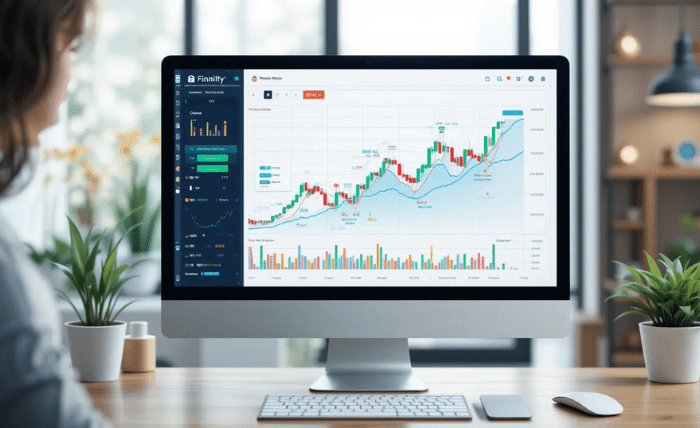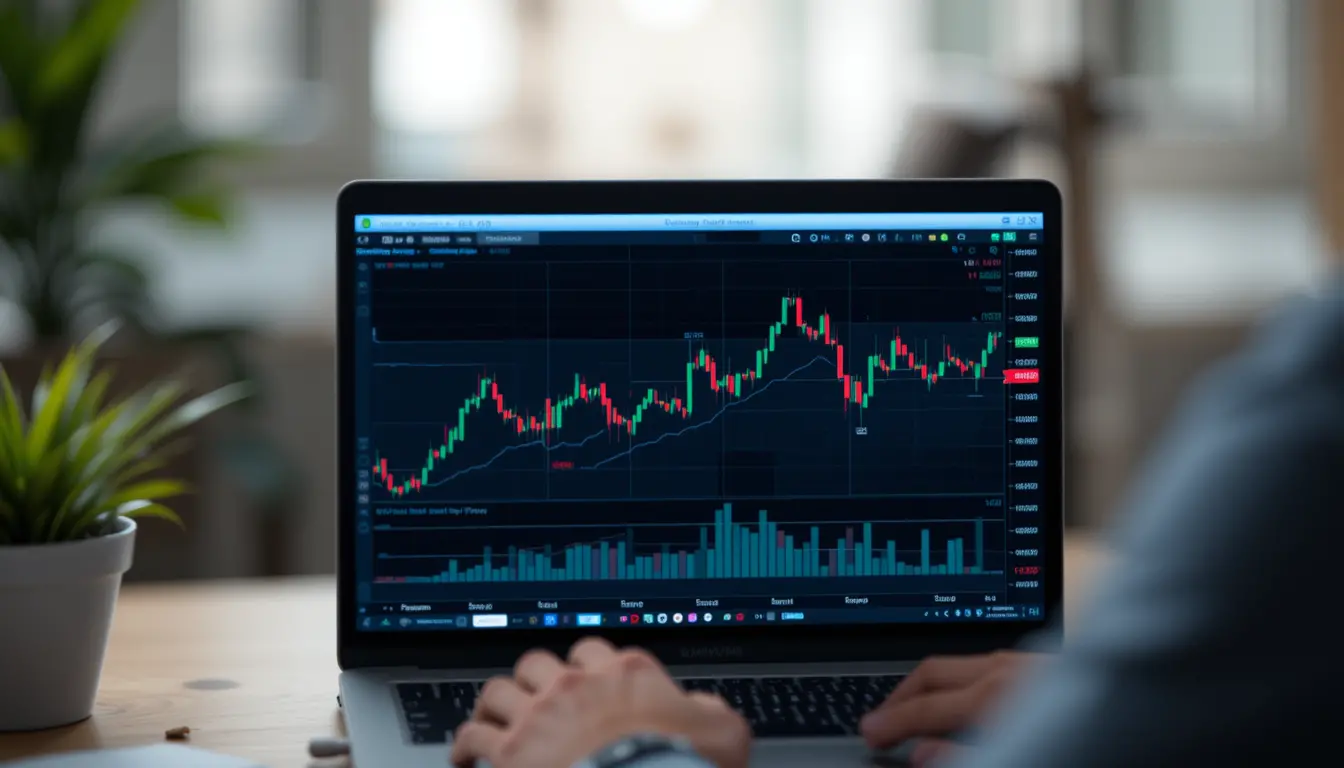Finnifty Investing Chart: Trends, Strategies, and Smart Investment Tips Explained

If you’re a beginner or experienced investor looking to understand how to use the Finnifty investing chart to make smart decisions, you’re in the right place. The Finnifty investing chart is an essential tool for investors who want to track market trends, analyze stock movements, and make more informed investment choices. Whether you’re interested in understanding how this chart works or discovering the best strategies for using it, this guide will break everything down in simple terms.
What Is the Finnifty Investing Chart?
The Finnifty investing chart is a visual representation of stock market data that investors use to track the performance of the Nifty 50 index. The Nifty 50 represents the top 50 companies listed on the National Stock Exchange (NSE) of India. These companies span across various industries, making the Nifty 50 a strong indicator of market trends in India.
The Finnifty investing chart shows price movements over time, helping investors identify patterns and trends. By analyzing this chart, investors can make better decisions about when to buy, sell, or hold their investments.
How Does the Finnifty Investing Chart Work?
The Finnifty investing chart displays data over different time periods, ranging from minutes to years. It tracks the performance of the Nifty 50 index, providing a clear picture of how the index has moved over time. The chart usually includes elements like:
Price data: Shows the opening, closing, highest, and lowest prices for each time period.
Volume data: Represents the number of shares traded during a specific time frame.
Trends: Helps investors identify whether the market is moving upwards, downwards, or remaining steady.
By understanding how to read this chart, investors can start predicting future trends and adjust their strategies accordingly.
Why Should You Use the Finnifty Investing Chart?
Using the Finnifty investing chart can be very helpful for investors who want to keep track of market trends. Here’s why it’s a great tool for smart investing:
Spot Trends Early: By closely following the chart, you can notice patterns that suggest potential upward or downward movements.
Make Data-Driven Decisions: The chart provides factual information that can guide your investment choices. You’ll have data in front of you to make better decisions.
Monitor Market Sentiment: The chart can help you gauge how other investors are feeling. If there’s a lot of trading activity or price movement, it could indicate market sentiment.
Avoid Emotional Investing: By focusing on the data from the Finnifty investing chart, you can make logical decisions instead of relying on emotions, such as fear or greed.
Key Strategies for Using the Finnifty Investing Chart
Now that you know what the Finnifty investing chart is and how it works, let’s take a look at some strategies you can use to make the most of this tool.
Identifying Support and Resistance Levels
Support and resistance are two key concepts that can be easily spotted on the Finnifty investing chart.
Support: This is the price level where an asset tends to stop falling and begins to rise again. It acts like a floor for the price.
Resistance: This is the price level where an asset tends to stop rising and starts to fall back down. It acts like a ceiling for the price.
By identifying these levels on the chart, you can predict where prices are likely to change direction and make informed decisions.
Trend Following
One of the most common strategies used with the Finnifty investing chart is trend following. If the chart shows that the Nifty 50 index is in an upward trend, it might be a good time to buy. Conversely, if the index is in a downward trend, it could be a signal to sell or stay out of the market.

Look for patterns such as “higher highs” and “higher lows” to confirm that a trend is in place. Following trends is a simple yet effective strategy for new and experienced investors.
Using Technical Indicators
The Finnifty investing chart often includes technical indicators that can help you predict future price movements. Some common indicators are:
Moving averages: These smooth out price data over a specific period, making it easier to identify trends.
Relative Strength Index (RSI): This measures whether an asset is overbought or oversold, giving you insights into potential price reversals.
MACD (Moving Average Convergence Divergence): This indicator shows the relationship between two moving averages, helping investors spot potential buy or sell signals.
By using these indicators, you can add another layer of analysis to the Finnifty investing chart and make more accurate predictions.
Combining the Finnifty Investing Chart with Other Tools
While the Finnifty investing chart is a powerful tool on its own, it’s often best to combine it with other resources to make smarter investment decisions. You can use news websites, economic reports, and other charting platforms to get a well-rounded view of the market.
For example, you could follow Finnifty chart investing.com to stay updated with the latest news and analyses related to the Nifty 50 index. Combining different tools will give you a clearer understanding of the market’s movements.
Common Mistakes to Avoid When Using the Finnifty Investing Chart
While the Finnifty investing chart is an excellent tool, there are a few mistakes investors often make when using it. Here are some common pitfalls to avoid:
Relying Solely on the Chart: While the chart provides valuable data, it’s important to consider other factors like news events, company earnings, and global economic conditions.
Overlooking Risk Management: Even with a perfect strategy, no investment is without risk. Always use proper risk management techniques to protect your portfolio.
Getting Too Attached to Short-Term Movements: Short-term market fluctuations can be noisy and misleading. Focus on the bigger picture to avoid making rash decisions based on temporary market movements.
Ignoring Volume Data: Volume is a critical part of analyzing the Finnifty investing chart. Without paying attention to volume, you may miss signs of a trend’s strength or weakness.
How to Start Using the Finnifty Investing Chart Today
If you’re ready to start using the Finnifty investing chart, here’s a simple step-by-step guide to get you started:
Find a Charting Platform: You can access the Finnifty investing chart through various online platforms, such as Finnifty chart investing.com or other financial websites. These platforms will give you live updates on the Nifty 50 index and other market data.
Choose Your Time Frame: Decide on the time frame you want to analyze. Are you looking for long-term trends or short-term movements? You can select different time periods, from minutes to years, depending on your investment goals.
Analyze the Data: Use the chart to identify trends, support and resistance levels, and key technical indicators. Take notes and start developing your strategy.
Make Your Investment: Once you’ve analyzed the data, you can make your investment decisions. Whether you’re buying or selling, always remember to stick to your strategy and manage your risk.
Conclusion
The Finnifty investing chart is a valuable tool for anyone looking to track market trends and make smart investment decisions. By understanding how to read the chart, identifying trends, and using various strategies, you can enhance your investing skills. Start by using the Finnifty investing chart to monitor the Nifty 50 index, and remember to combine it with other tools to make well-informed decisions. With patience and practice, you can use the Finnifty investing chart to take control of your investments and build a successful portfolio.





